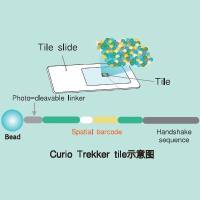Epitope Mapping by Surface Plasmon Resonance in the BIAcore
互联网
662
The BIAcore (biomolecular interaction analysis) analytical system consists of a detection unit, an autosampler, and a liquid delivery system, controlled by a computer. Karlsson et al. ( 1 ) have given a detailed description of the analytical system, the detection principle, and the theoretical background for binding measurements. The system combines a microfluidic unit in contact with a sensor for surface plasmon resonance (SPR) detection. Figure 1 shows the principle of SPR detection. The sensor chip consists of a glass slide mounted in a plastic frame. On one side of the glass, a thin film, approx 50 nm, of gold is deposited, and the dextran matrix is attached on top of this film. The sensor chip is inserted into the instrument with the dextran/gold side in contact with the flow cells. When the injected sample is passing through the flow cell, antigen binds to immobilized antibody in the dextran matrix. Light covering a span of angles of incidence falls on the glass side and is reflected into a 2D array detector where the intensity of the reflected light is measured. SPR occurs at a certain angle and is seen as a minimum in reflected light intensity. When the refractive index close to the gold film is changed, for example, when immobilized antibody binds antigen, the angle at which SPR occurs is changed. This change is proportional to the amount of bound protein, and is expressed as refractive units (RU) on the Y -axis of a sensorgram; 1000 RU corresponds to 1 ng protein/mm 2 of the 100-nm thick dextran layer. Reproducibility of the system has been validated by Fagerstam et al. ( 2 ).
Fig. 1. The principle of SPR signal detection. Surface plasmon resonance detects changes in refractive index of the surface layer of a solution in contact with the sensor chip. The change in refractive index is caused by variation of the mass on the sensor chip surface owing to interactions of the biomolecules (A,B) . A dip in the intensity of the reflected light occurs at a certain angle, which is referred to as the resonance signal (RU) (C) . The shift in resonance signal is plotted against time and displayed in a sensor-gram (from ref. 1 ).









